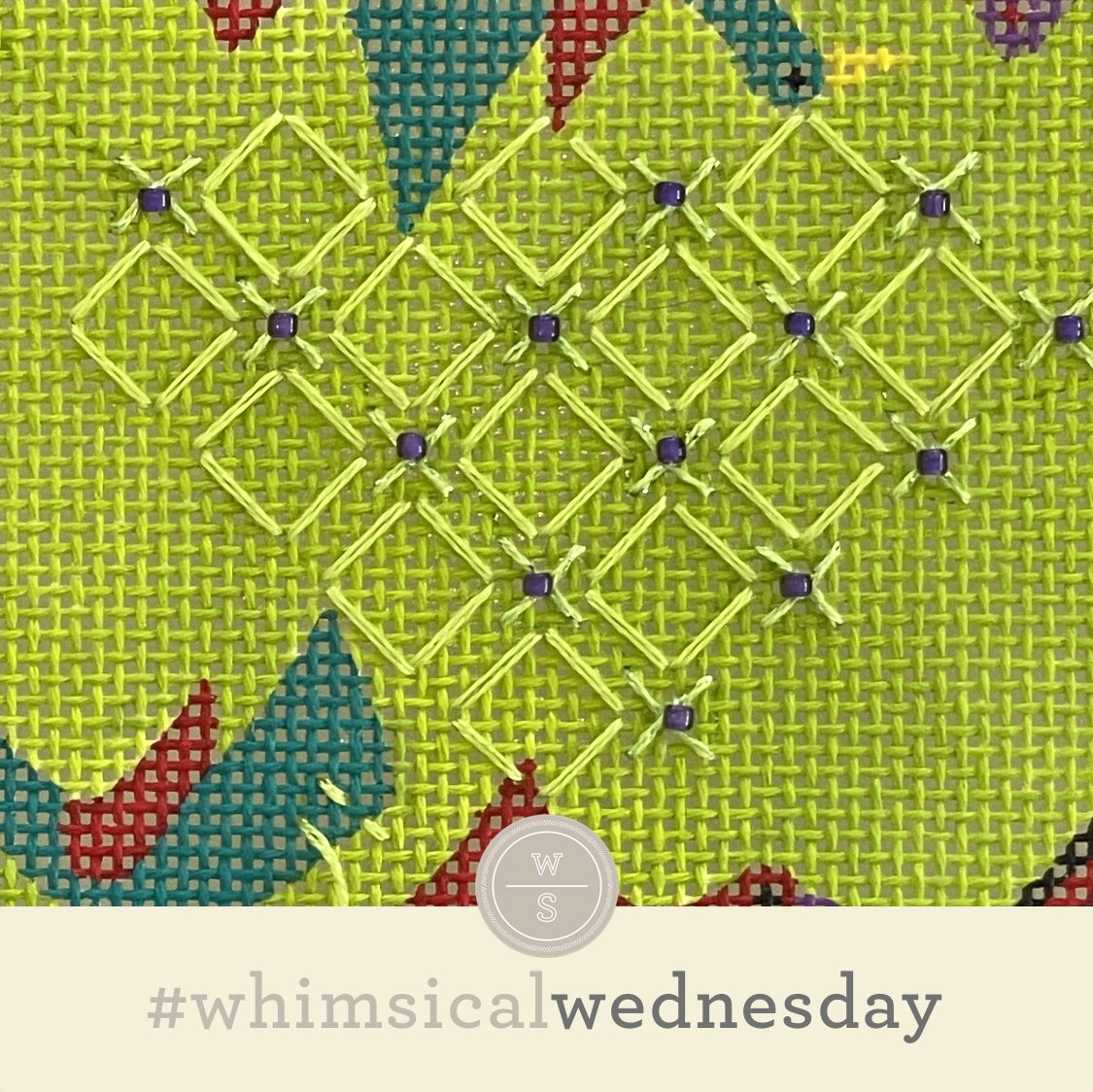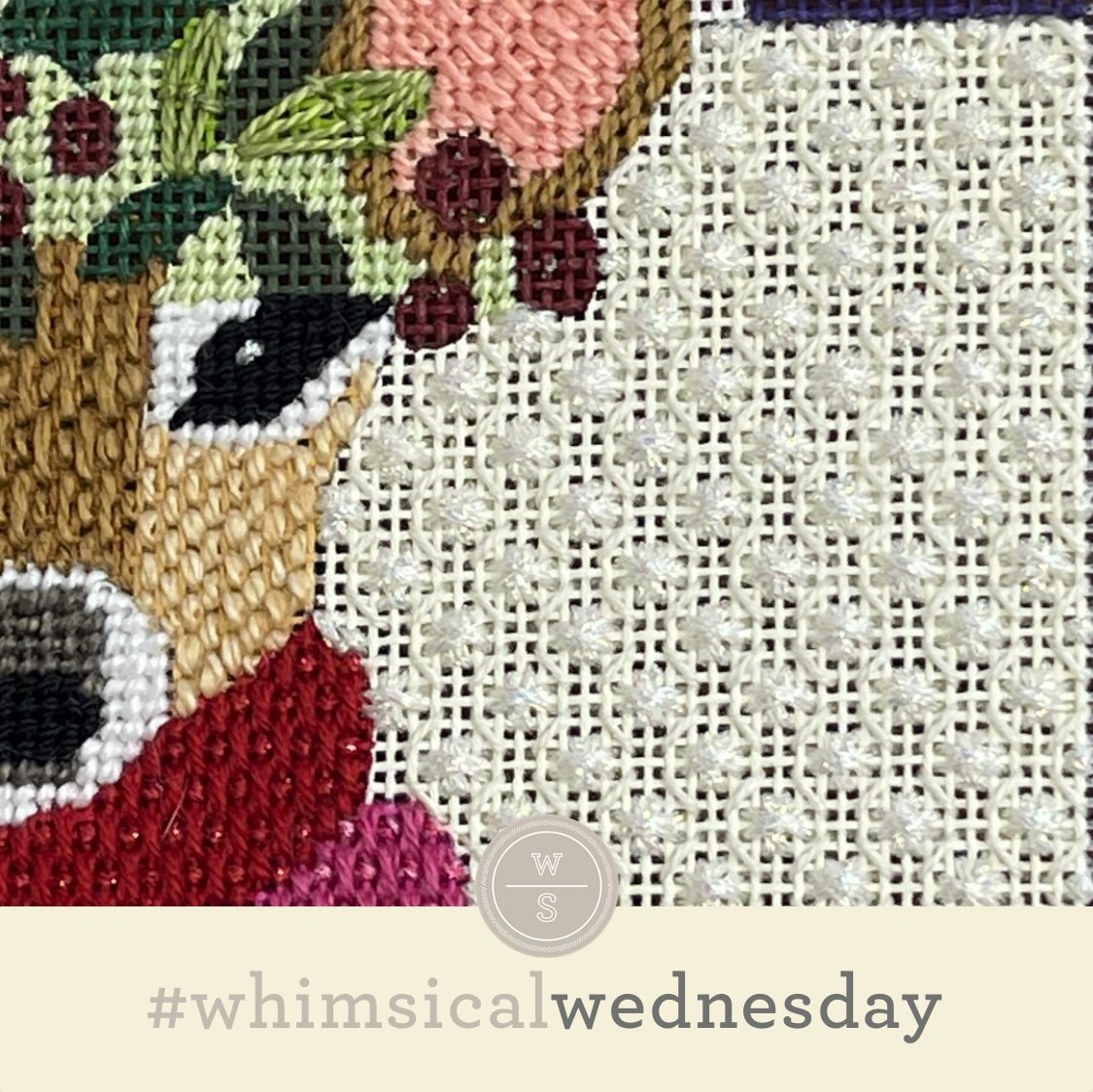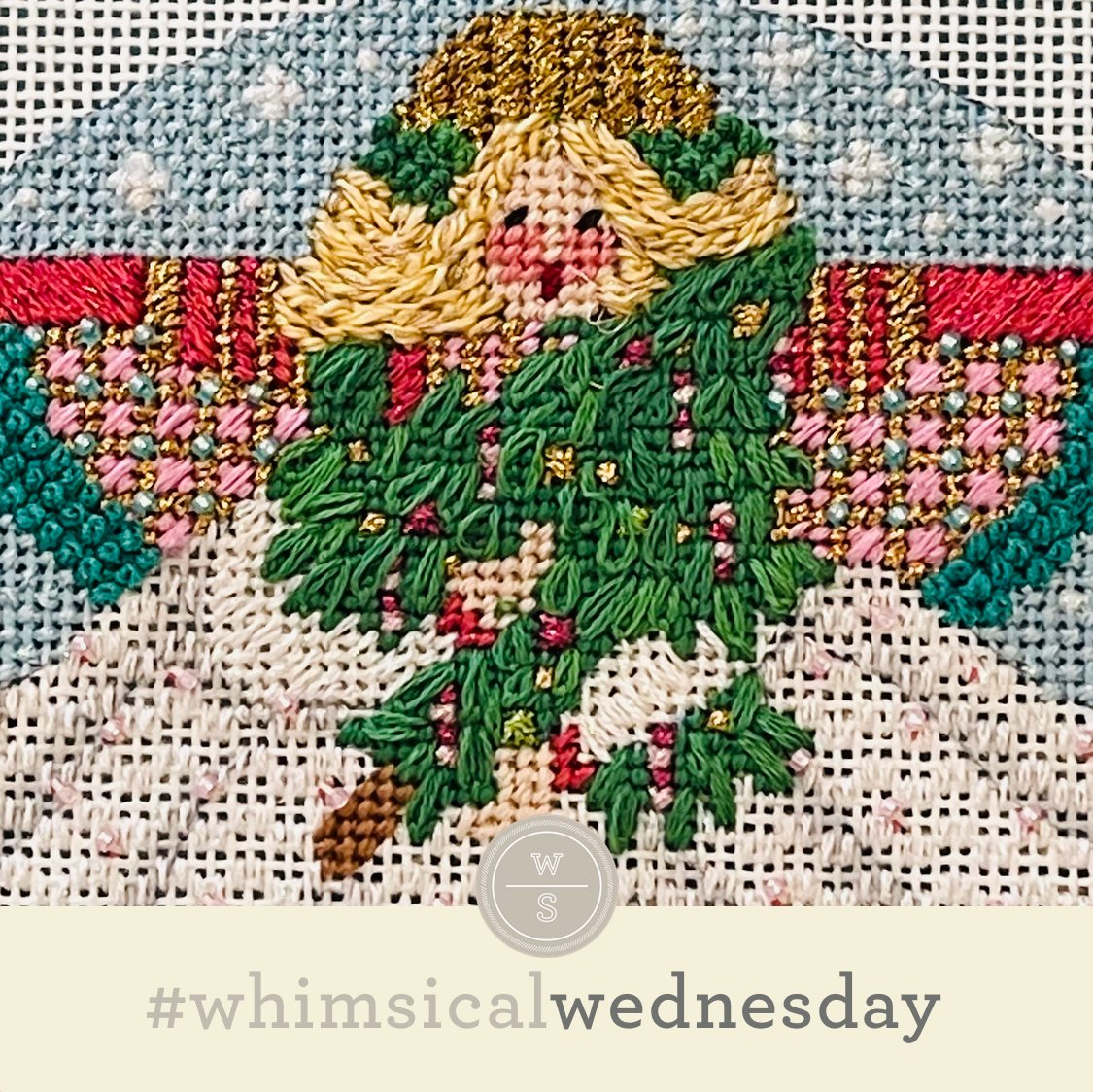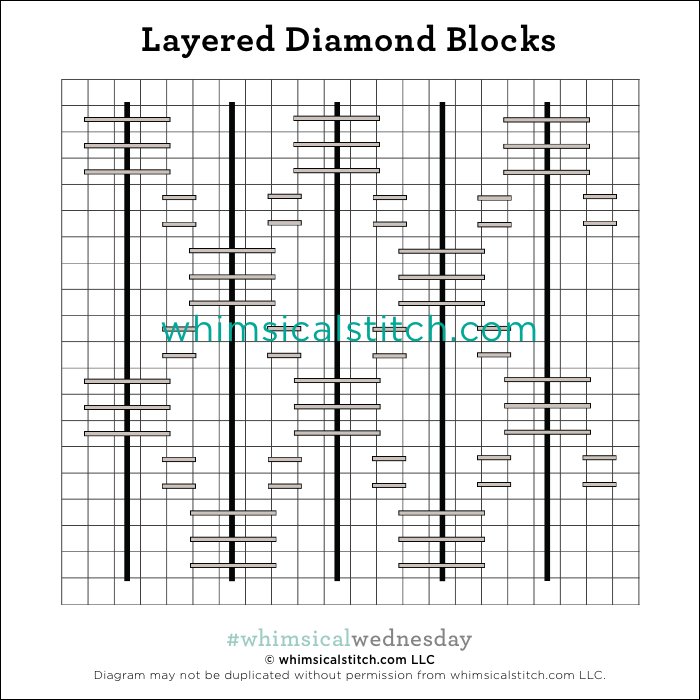This week’s stitch is a lovely mistake. I mapped out one of my traditional “double” diamonds. The customer added an extra row between what was supposed to be a pair of stitches, I added a bead and an X, and here we are. Teamwork!
For the stitched sample, I played with two plies of Soie (black lines), Petite Silk Lame (aqua lines), and a Sundance size 11 bead on a Zecca backgammon board (18M). (Full disclosure: this is me playing. If I go with this stitch for the backgammon board, I will eliminate the bead.)
The accent can be the X, the bead, or both. It really depends on how much attention you want to draw to the area. The original version of this used only a bead with a single ply of Gloriana for the diamonds for a sky (on 18M). Using this for clothing with Vineyard Silk (black lines) and Silk lame (aqua lines) would be a dramatic example of the other end of the spectrum. I’m looking forward to using this for an dress on an upcoming project with three plies of silk floss (black lines), Fyre Werks, and a bead.
These stitch diagrams, along with all other #whimsicalwednesday and #smallspacesunday stitch diagrams, can also be found on a Pinterest board here. Be sure to follow whimsicalstitch.com on Facebook, Pinterest, Instagram, and Twitter.
If you like what you see on this blog, there's more: Mary’s Whimsical Stitches Volume 1 is a contemporary how-to collection of more than 250 stitches for stitchers regardless of skill level. The book includes updated and sequenced diagrams from this blog, all-new stitches, and a chapter on the basics of needlepoint; Mary’s Whimsical Stitches Volume 2 features chapters on Balanced, Beading, Diagonal, Layered, Oblique, Small, and Straight stitches.
Also, you can download for free the first chapter from my first book which covers basic needlepoint stitches and stitch compensation techniques along with new top-line information on needlepoint materials and tools, how to handle threads, and other helpful needlepoint resources.
whimsicalstitch.com also sells Stitch Guides and Stitch Concepts for Melissa Shirley Designs, Zecca Designs, Sandra Gilmore, Purple Palm, Maggie, and Penny MacLeod, and many more. Click here to see the newest guides and click here to see the entire collection.
I hope you have the perfect spot for this stitch! Please enjoy! Have a wonderful #whimsicalwednesday!
A Note about Diagrams
I use color in diagrams to make them as clear as possible. The primary function of different colored lines is to illustrate a stitch sequence. For example, layering of colors demonstrates you add them in that order. They can also provide ideas on how to integrate additional threads (one line for each color). Or, you can use the same thread for all color lines. That's where I encourage you to use your imagination for the space you are stitching!


























